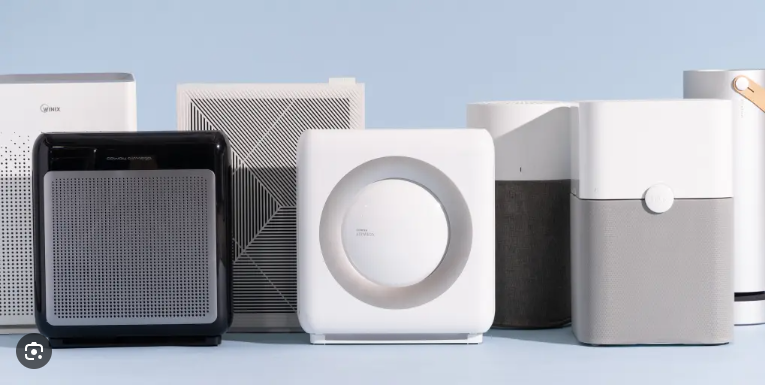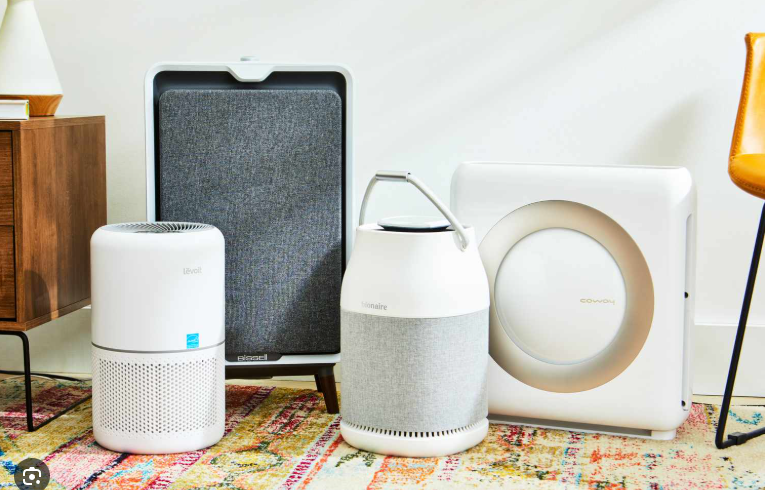Choosing between a portable vs large room air purifier is a critical decision when seeking the best air purifier 2025 for your home. Both types offer unique benefits for improving indoor air quality by removing pollutants, allergens, and odors, but they cater to different needs based on room size, mobility, and usage. This comprehensive guide compares portable and large room air purifiers, highlighting their features, performance, and suitability. We’ll also cover air purifier setup, maintenance, and troubleshooting to help you maximize air quality. Whether you need a compact portable air purifier or a powerful unit for larger spaces, this article will guide you to the best air purifier 2025 for your needs.
Why Comparing Portable vs Large Room Air Purifier Matters
Indoor air quality impacts health, especially for those with allergies, asthma, or sensitivity to pollutants like dust, pet dander, or smoke. The best air purifier 2025 should match your space and lifestyle, whether you need a compact unit for flexibility or a robust model for expansive areas. Understanding the differences in portable vs large room air purifier helps you choose a device that delivers clean air efficiently while fitting your budget and space constraints. Proper air purifier maintenance and usage ensure long-term performance, making this comparison essential for informed decision-making.
Overview of Portable and Large Room Air Purifiers
Portable Air Purifiers
Portable air purifiers are compact, lightweight units designed for small to medium rooms (typically 100–300 sq. ft.). They’re easy to move between rooms, making them ideal for apartments, dorms, or targeted use in spaces like bedrooms or offices. Models like the Levoit Core 300S or Blueair Blue Pure 411i Max are popular for their affordability and versatility.
Large Room Air Purifiers
Large room air purifiers are built for bigger spaces (400–1,200 sq. ft.), such as living rooms, open-plan homes, or basements. They feature higher Clean Air Delivery Rates (CADR) and more powerful motors, like the Dyson Purifier Big+Quiet or NuWave OxyPure, but are less portable due to their size and weight.

Portable vs Large Room Air Purifier: Key Comparison Factors
Let’s compare portable vs large room air purifier across critical factors to determine the best air purifier 2025 for your needs.
1. Room Coverage
- Portable Air Purifier: Designed for smaller spaces, portable units typically cover 100–300 sq. ft. For example, the Levoit Core 300S covers up to 219 sq. ft., making it ideal for bedrooms, offices, or small apartments.
- Large Room Air Purifier: Built for larger areas, these units cover 400–1,200 sq. ft. The Dyson Big+Quiet BP03 handles up to 1,076 sq. ft., suitable for open-plan living areas or large rooms.
Verdict: Choose a portable air purifier for small to medium rooms and a large room purifier for expansive spaces or whole-home coverage.
2. Filtration Technology
- Portable Air Purifier: Most portable models, like the Blueair Blue Pure 411i Max, use a 3-stage filtration system (pre-filter, true HEPA, activated carbon) to remove 99.97% of particles as small as 0.3 microns, including dust, pollen, and pet dander. Some include HEPASilent technology for enhanced particle capture.
- Large Room Air Purifier: Large room units, such as the NuWave OxyPure, often feature multi-stage filtration (pre-filter, bio-guard, true HEPA, activated carbon) and sometimes additional technologies like UV or PlasmaWave for bacteria and virus elimination.
Verdict: Both offer true HEPA filtration, but large room purifiers may include advanced features like UV or formaldehyde removal, ideal for homes with specific air quality concerns.
3. Portability and Design
- Portable Air Purifier: Compact and lightweight (often under 10 lbs.), portable units like the Xiaomi Smart Air Purifier 4 Compact are easy to move between rooms. Their minimalist designs blend well in small spaces.
- Large Room Air Purifier: Larger and heavier (15–30 lbs.), units like the LG PuriCare AeroTower are less portable but often feature premium designs, such as oscillation or furniture-like aesthetics, suitable for upscale interiors.
Verdict: Portable air purifiers win for mobility and flexibility, while large room purifiers prioritize power and aesthetics over portability.
4. Noise Levels
- Portable Air Purifier: Designed for quiet operation, portable units like the Levoit Core 300S operate at 20–22 dB on low settings, ideal for bedrooms or quiet spaces.
- Large Room Air Purifier: Larger units, such as the Dyson BP03, can be noisier at high speeds (up to 55 dB) but are quiet on low settings (~23–30 dB), suitable for living areas.
Verdict: Portable purifiers are generally quieter, making them better for noise-sensitive environments, while large room units may be slightly louder at peak performance.
5. Energy Efficiency
- Portable Air Purifier: Portable units consume less power, typically 5–30 watts. The Blueair Blue Pure 411i Max uses 1.2–13.6 watts, keeping electricity costs low (~$1–$2/month at $0.15/kWh).
- Large Room Air Purifier: Larger units use 50–150 watts due to powerful motors. The NuWave OxyPure averages 60–100 watts, costing ~$6–$10/month for continuous use.
Verdict: Portable purifiers are more energy-efficient, ideal for budget-conscious users, while large room units consume more power for greater coverage.
6. Maintenance and Filter Costs
- Portable Air Purifier: Filters last 6–12 months, with replacements costing $20–$50. Washable pre-filters, as in the Coway Airmega AP-1512HH, reduce long-term costs.
- Large Room Air Purifier: Filters also last 6–12 months but are pricier ($50–$100). Some models, like the NuWave OxyPure, have reusable filters, lowering maintenance costs.
Verdict: Portable purifiers are generally cheaper to maintain, but large room models with reusable filters can offer savings over time.
Air Purifier Setup for Optimal Performance
Proper air purifier setup maximizes the effectiveness of both portable and large room purifiers:
- Place in a central location with 12–18 inches of clearance for airflow, ensuring vents are unobstructed.
- Position on a flat, stable surface to prevent vibrations or tipping.
- Plug directly into a wall outlet for air purifier safety, avoiding extension cords.
- Run continuously on auto or low settings for consistent air quality, especially in high-pollution areas.
Portable units are ideal for targeted rooms, while large room purifiers suit open spaces. For setup tips, visit airpurifierr.com.
Air Purifier Maintenance for Long-Term Efficiency
Regular air purifier maintenance ensures both types perform at their best:
- Replace Filters: Swap HEPA filters every 6–12 months and activated carbon filters every 3–6 months, depending on usage.
- Clean Washable Filters: Clean pre-filters every 1–2 months with a vacuum or mild soap and water, ensuring they’re dry before reinstalling.
- Wipe Down the Unit: Clean the exterior and vents every 2–3 weeks to prevent dust buildup.
- Check Sensors: For smart models, clean air quality sensors to maintain accurate readings.
Maintenance is simpler for portable units due to their compact size, but large room purifiers may have reusable filters, reducing costs. Check our filter maintenance tips for guidance.
Air Purifier Troubleshooting: Common Issues
If your purifier isn’t performing optimally, try these air purifier troubleshooting steps:
- Reduced Airflow: Check for clogged filters or blocked vents. Clean or replace filters and reposition the unit.
- Persistent Odors: Replace saturated activated carbon filters, common in both portable and large room models.
- Noisy Operation: Inspect for loose components or clogged filters. Use lower fan speeds for quieter operation, especially with portable units.
- Filter Light Issues: Reset the filter indicator after replacing filters, per the manual.
How to Clean with an Air Purifier
Using your air purifier during cleaning enhances air quality. Here’s how to clean with an air purifier:
- Run on medium or high speed during vacuuming or dusting to capture airborne particles.
- Position near the cleaning area but away from direct debris to avoid clogging filters.
- Check and clean pre-filters after heavy cleaning to maintain performance.

Air Purifier Safety: Best Practices
Follow these air purifier safety tips for safe operation:
- Unplug before cleaning or replacing filters to avoid electrical hazards.
- Place in a dry area to prevent mold or motor damage.
- Use manufacturer-recommended filters to maintain performance and warranty.
Which is the Best Air Purifier 2025: Portable or Large Room?
The choice between portable vs large room air purifier depends on your needs:
- Choose a Portable Air Purifier if: You need a compact, budget-friendly unit for small to medium rooms (e.g., bedrooms, offices). Models like the Levoit Core 300S or Blueair Blue Pure 411i Max are ideal for apartments, offering portability, low energy use, and affordable maintenance.
- Choose a Large Room Air Purifier if: You require powerful filtration for large spaces or open-plan homes. Units like the Dyson Big+Quiet BP03 or NuWave OxyPure excel in larger areas, with advanced features and higher CADR.
Conclusion: Portable vs Large Room Air Purifier
Deciding between a portable vs large room air purifier comes down to room size, mobility needs, and budget. Portable purifiers like the Levoit Core 300S offer flexibility and low costs for smaller spaces, while large room models like the Dyson BP03 provide robust performance for expansive areas. Proper air purifier setup, regular air purifier maintenance, and strategic use during air purifier cleaning ensure optimal air quality. Use air purifier troubleshooting to address issues and keep your device running smoothly.
For more guidance on choosing the best air purifier 2025, visit airpurifierr.com. Select the right air purifier and breathe cleaner air today!